So this year for me started in Sweden as usual and since I had nothing better to do on 1st of January I decided to visit Örebro. And there I got reminded that there is such thing as Solar system model on real landscape. So today I want to talk about those a bit.
The first time I actually spotted one was when I went to that special place in Germany known for one curious fact: once upon a time a colonel sent the King to serve in an army and he served his time there. Yes, I’m talking about Bad Nauheim.
There is a very simplified model of Solar system there—just the outer planets.
 Saturn, right at the rail station
Saturn, right at the rail station
You can see the photos for all planets and in better quality in in German Wickedpedia.
But there is at least one of the problems with it: even the distances do not seem to be in proper scale let alone planet sizes. And that’s where Sweden comes to mind.
In Sweden they tried to make proper scale of Solar system. They took Globen as the reference (it was the largest hemispherical building available after all) and tried to install models of various objects around while maintaining the proper scale in both sizes and distances.
Here’s an incomplete list of object on the model. Jupiter and Saturn are not present in the model since they’d need spheres more than six metres in diameter to represent.
- The Sun
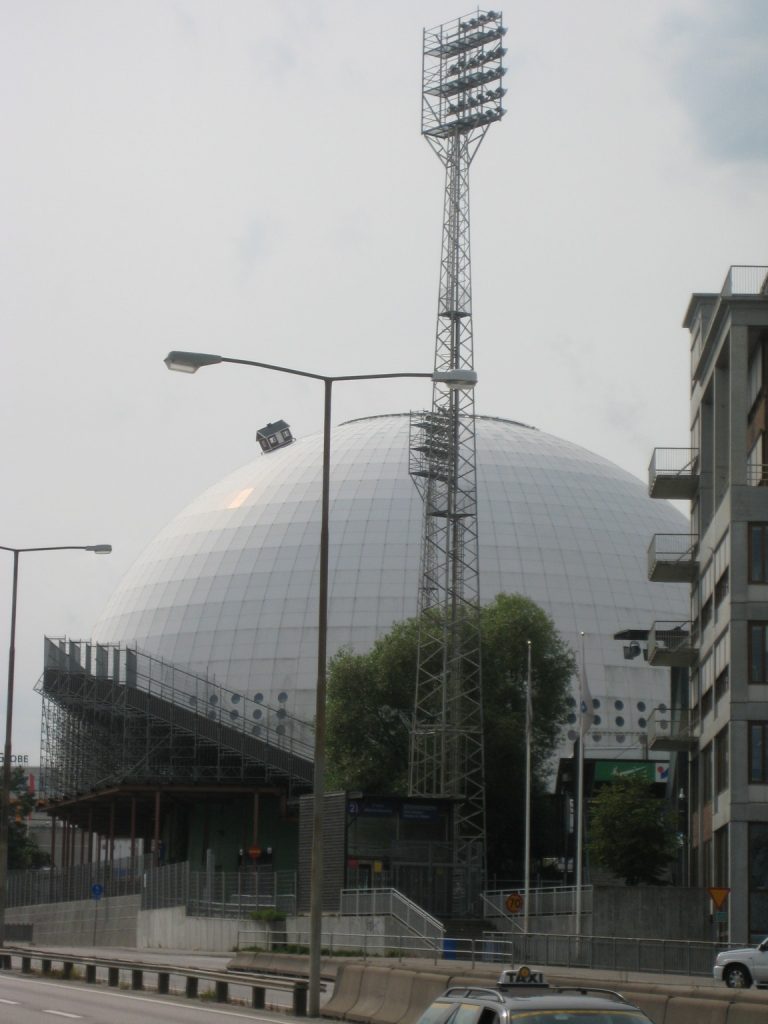
- Mercury, should be located in Slussen near Stockholm city museum but because of current construction works it’s not possible to see;
- Venus, located somewhere in KTH (still in Stockholm);
- Earth and Moon, located in Royal Museum of Natural History (still in Stockholm);
- Mars, located in Mörby Centrum (a mall in Mörby in Stockholm region)
 ;
; - Asteroid Saltis, discovered in Stockholm Observatory and by some coincidence its place in the model was at the right distance so it’s installed there
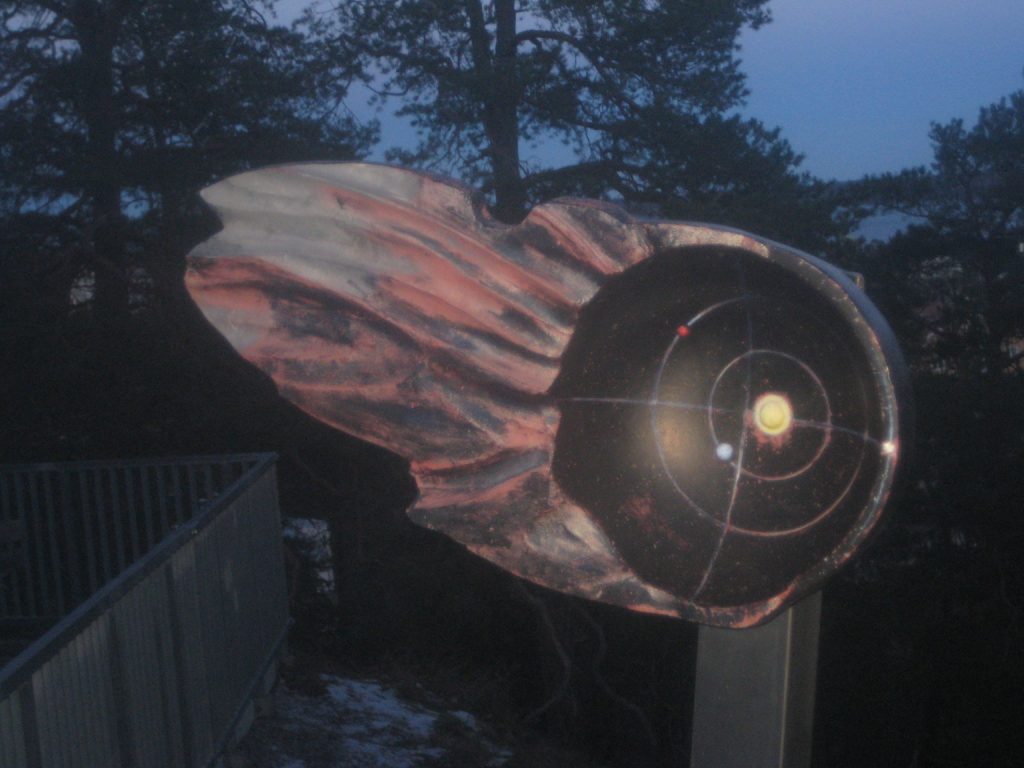 ;
; - Jupiter should be located around Arlanda but it’s too large to fit;
- Saturn, should be located in Uppsala but see above. At least in Uppsala itself there’s a plaque with Titan standing next to Anders Celsius’s house (and some other moons of Saturn are represented by models in local schools);
- Uranus, located in Lövstabruk (that’s somewhere between Uppsala and Gävle);
- Neptune, located in Söderhamn (looks out of scale though)

- The celebrated Kuiper belt dwarf planet Pluto with its satellite Charon, located in Delsbo
 ;
; - Termination shock is symbolised by an object installed in Kiruna, way behind the Arctic circle and about 1000km from Stockholm.
There are other objects (asteroids, comets, dwarf planets) installed in various places, including even Southern Sweden. The model is large enough to accommodate various objects while keeping the scale.
And as I mentioned in the beginning, there’s own Solar system model in Örebro (or rather, Solar system in Örebro format as it’s called properly). They also try to keep scale both in size and distance. This model is located along one side of the same street (actually two or three but they merge seamlessly). The model contains only the Sun (at Olof Palmes Torg) and planets, Neptune being located around their famous water-tower Svampen (since they’ve made this model in 2009 they did not have to care about Pluto any more). Planets smaller than Earth are represented by plaques in the pavement, the rest are made of metal and put on pedestals:
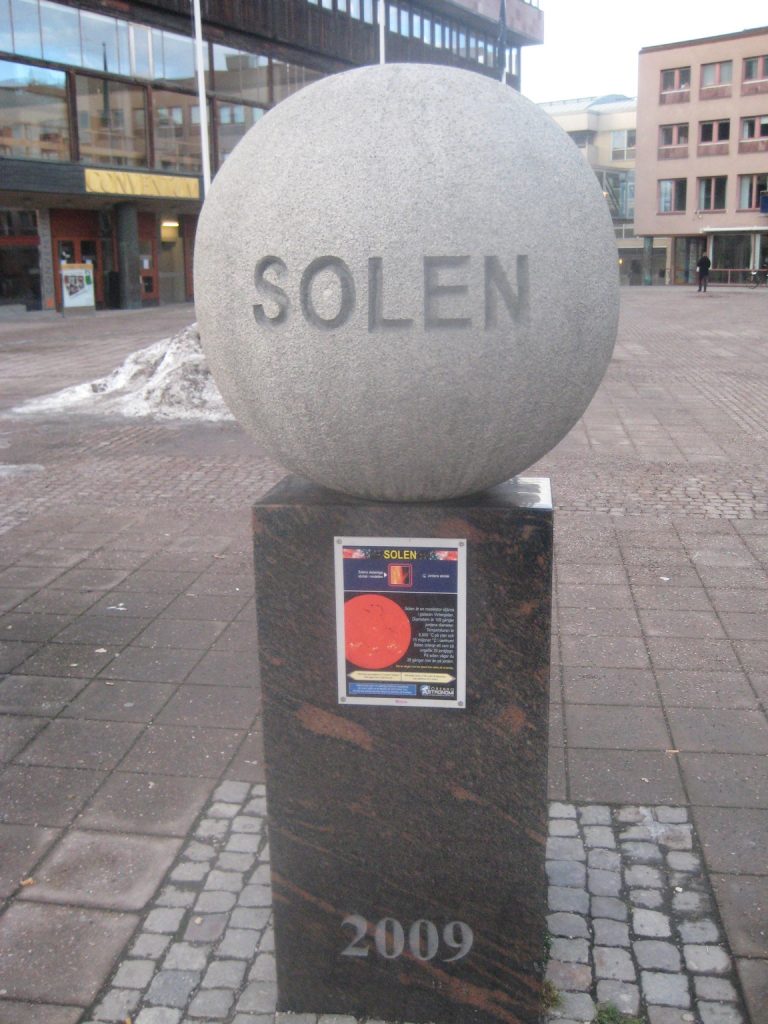
There are various models of Solar system but there’s none better than Swedish one. Also it gives me a pretext to visit various Swedish places again and again.
 Uranus, in the Kurpark
Uranus, in the Kurpark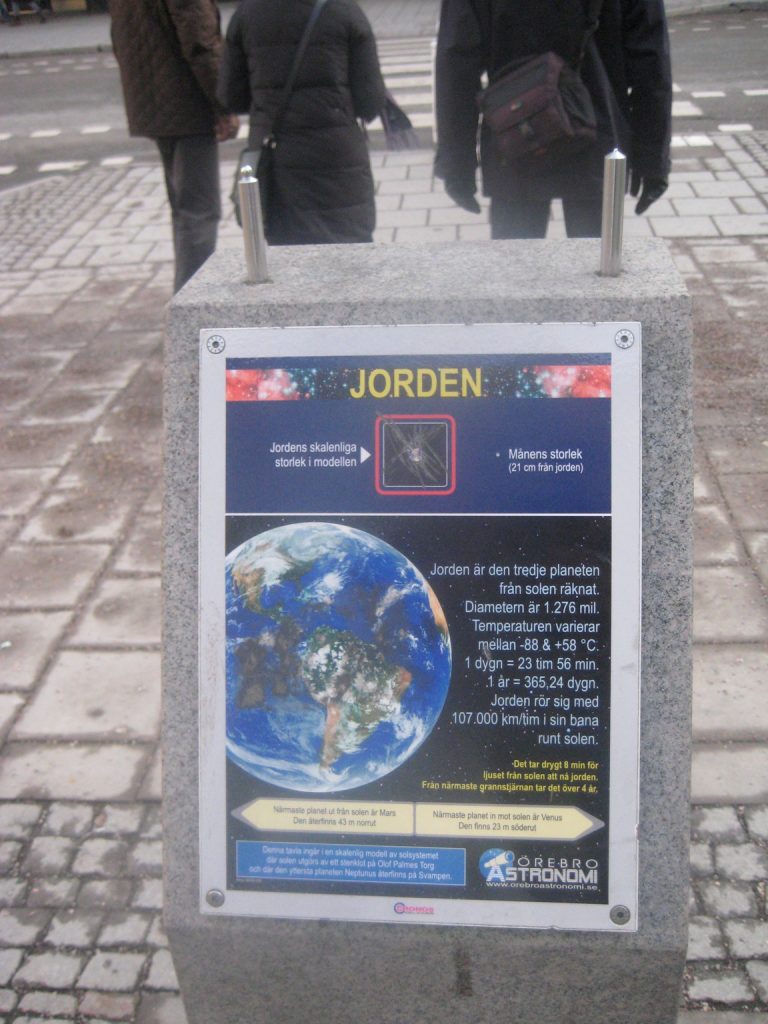
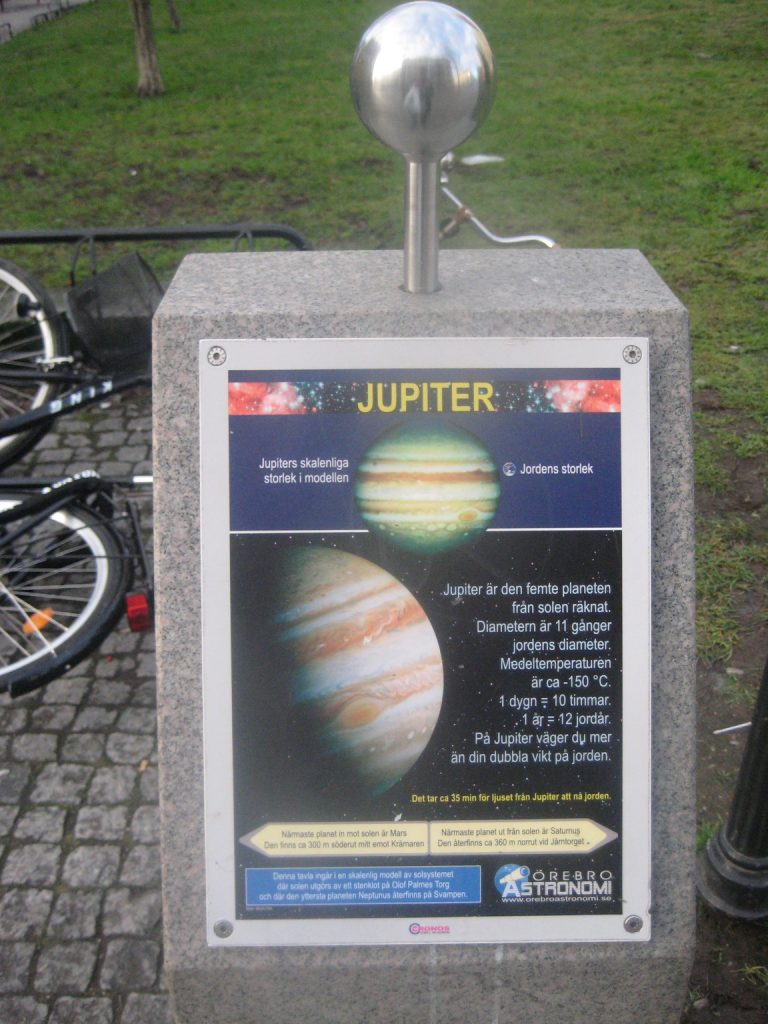

Woah, wait… Why is there a tiny house on the sun?
Because I took a picture there was a certain musical going in Globen and that house was part of promotion.